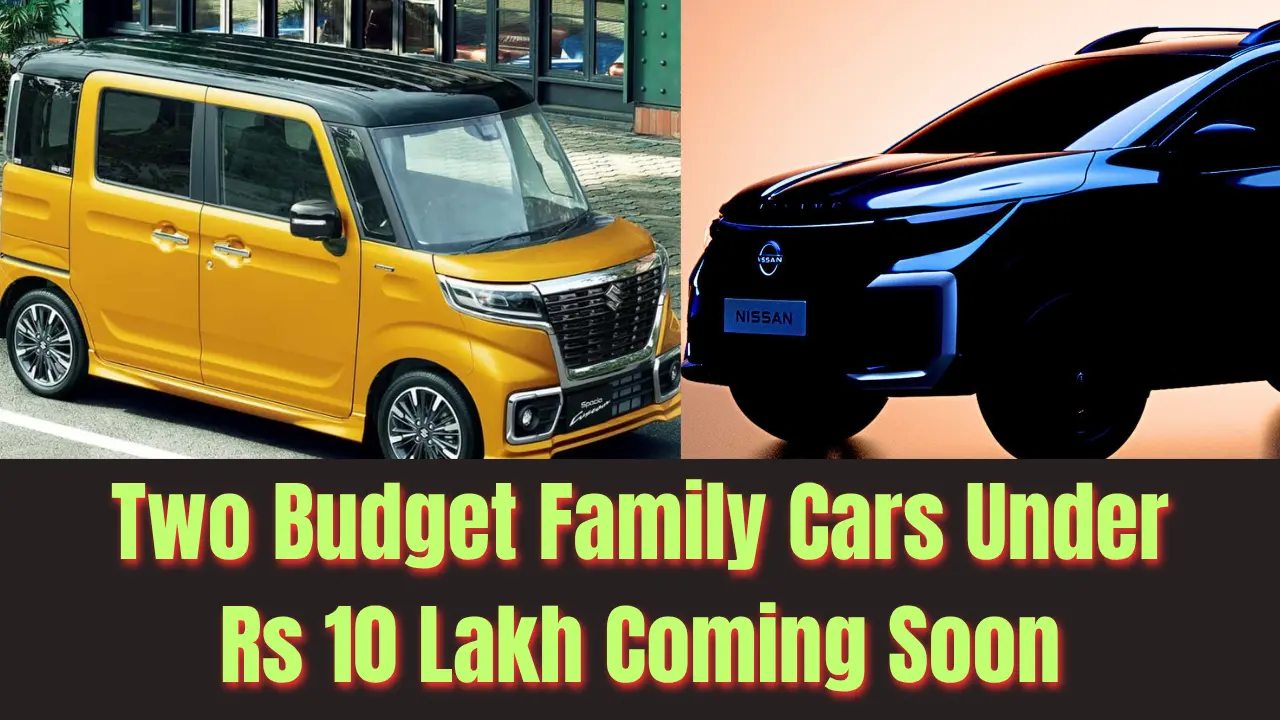Two major Japanese automakers are gearing up to shake up India’s budget MPV segment with exciting new launches in 2025-26.
Both Nissan and Maruti Suzuki are preparing compact MPVs that promise to deliver maximum family space without breaking the bank. While Nissan’s Triber-based MPV is set to debut by early 2026, Maruti’s Spacia-inspired mini MPV will follow suit, creating fresh competition in the sub-Rs 10 lakh segment that’s been dominated by the Ertiga for years. And honestly? It’s about time someone gave Maruti a run for their money in this space.
Design: Fresh Faces for Familiar Formulas
Nissan’s Approach
The upcoming Nissan MPV takes the proven Triber recipe and gives it a distinctly Japanese makeover. The most striking change is upfront – a bold C-shaped grille with hexagonal vents replaces the Triber’s rather plain-Jane design, while the Nissan logo sits proudly in the center. The silver wraparound treatment on the bumper adds a premium touch that honestly surprised us at this price point.
Those projector headlamps get new LED daytime running signatures at the top, ditching the Triber’s separate DRL housing that always looked a bit aftermarket-ish. From the side, revised door panels and sportier alloy-style wheel covers hint at a more dynamic character – though let’s be real, it’s still an MPV, not a sports car!
Maruti’s Mini Marvel
Maruti’s mini MPV will borrow the boxy silhouette from Japan’s popular Suzuki Spacia but with Indian sensibilities thrown in. The front end features a blacked-out grille with chrome accents, a wide air dam, and rectangular headlights that give it a more rugged appearance than its cutesy Japanese sibling.
The Indian version will be slightly longer than the 3,395mm Japanese Spacia to accommodate that crucial third row – because let’s face it, seven seats are absolutely non-negotiable for Indian families. Try explaining to your in-laws why they can’t fit in the car!
Interior: Space Maximization Masters
Nissan’s Cabin
Inside, Nissan promises a more premium experience than the current Triber. The three-row layout remains flexible – fold the third row flat and you’ve got cargo space that’ll easily swallow your weekend getaway luggage plus the kids’ cricket kit. The dashboard gets an 8-inch touchscreen (larger than Triber’s unit) with wireless Apple CarPlay and Android Auto – finally catching up with the times.
A semi-digital instrument cluster replaces the Triber’s rather basic setup, while soft-touch door pads and adjustable headrests across all rows add that family-friendly comfort factor. Multiple USB ports ensure everyone’s devices stay charged during those inevitable “Are we there yet?” moments on long drives.
Maruti’s Smart Packaging
Maruti’s mini MPV will feature a dashboard layout similar to the Baleno and Fronx – familiar territory for existing Maruti owners who won’t need a manual to figure out where everything is. The three-row configuration is cleverly designed for Indian families, though it’ll skip the sliding rear doors of the Japanese Spacia to keep costs in check (and probably because Indian roads would destroy those mechanisms anyway).
The focus remains on maximizing cabin room within the sub-4-meter constraint, putting it in direct competition with the Renault Triber – which has been having a field day in this segment.
Features: Value-Packed Propositions
Nissan’s Tech Suite
Nissan isn’t holding back on features this time around. Automatic climate control, keyless entry, rear AC vents, and multiple storage cubbies will make those family road trips to Goa or the hills significantly less stressful. A rear-view camera and dedicated smartphone dock add modern convenience touches that busy parents will actually appreciate.
Higher variants could get side airbags, electronic stability control, and hill-start assist – features that are becoming increasingly important for safety-conscious Indian buyers who’ve finally started prioritizing protection over just price.
Maruti’s Proven Approach
While specific feature details are still under wraps, expect Maruti to load the mini MPV with their tried-and-tested feature set that rarely disappoints. The company plans to retail it through premium Nexa outlets, suggesting a more upmarket positioning than typical Maruti Arena models – think less “budget buy” and more “smart choice.”
Read Also: 2025 Altroz vs Baleno Comparison: Which Rs 7 Lakh Hatchback Offers Better Value
Engine: Proven Powertrains
Nissan’s Reliable Heart
The Nissan MPV will stick with the Triber’s dependable 1.0-liter three-cylinder petrol engine, producing around 72 PS and 96 Nm. Not exactly thrilling numbers, but adequate for city commutes and highway cruising with the family. Buyers can choose between a 5-speed manual or AMT for those who prefer convenience over engagement. There’s also buzz about a potential turbo-petrol variant for those wanting more punch – though we’ll believe it when we see it.
Maruti’s New-Gen Power
Maruti’s mini MPV will debut the 1.2-liter Z-Series petrol engine that’s also heading to the new Swift. This represents a step up from typical Kei car engines, with both manual and automatic transmission options expected. Knowing Maruti’s obsession with fuel efficiency, expect impressive mileage figures that’ll make your CA happy.
Safety: No Compromises
Both manufacturers are taking safety seriously – and it’s about time! Dual front airbags, ABS with EBD, and rear parking sensors will be standard across variants. Nissan’s higher trims might add electronic stability control and additional airbags, which is reassuring given how Indian families tend to pack these MPVs to the brim during festival season.
Price: The Sweet Spot
Here’s where things get really interesting. Nissan’s MPV is expected to be priced between Rs 7-10 lakh (ex-showroom), directly taking aim at the Maruti Ertiga and Hyundai Stargazer. Maruti’s mini MPV will likely slot below the Ertiga, targeting first-time MPV buyers who want maximum space on a tight budget – basically every growing Indian family ever.
